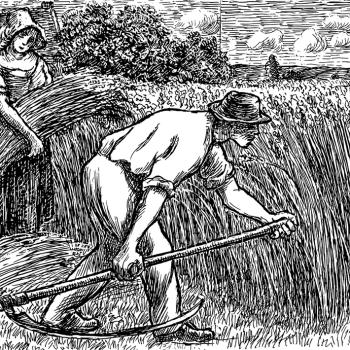The story of the Puritans starts across the pond in England. This Protestant group was founded on its categorical principles – they were protesting the Church of England. Puritans saw the Church of England as being too ‘Catholic’ in their practice. The Church needed reform – and this clash saw the Puritans harassed. The Puritans faced persecution from the Church of England and the government, which viewed them as a threat to the established order. They could be fined, imprisoned, and even executed for their beliefs. Because of this, they made their way to the New World in the 1600’s.
Puritan theology was Conservative and Calvinistic. They read the Bible literally and expected to hear God’s voice through the text. After all – it was the lack to Scripture that pushed them away from the English State Church. The combination of these belief systems created a rich and fertile environment for the development of literal and physical beliefs about Satan.
Satan in the 1600’s
The concept of Satan has changed throughout history, but most of Protestantism has held the idea that there is a physical entity called Satan. Satan’s job is to hinder the work of God and to keep people from becoming saved. Whether Satan is in Dante’s frozen lake or roaming the earth, his work is intentional, individual, and physical. Puritans were believers in the physical nature of Satan and this was important for the history of America.
The fear of Satan and his influence on the world also led to a strong sense of community. Puritans fought Satan spiritually, relying on each other for support and protection. This sense of community and shared purpose was significant in their New England settlements. They saw Satan as the ultimate tempter, constantly tempting people to sin and turn away from God. Eventually this would come to a head at the end of the 17th century. All of a sudden, there were witches in the ‘City on a Hill’.
Witches in Salem
While the European witch trials started slowing down, the Salem witch hunts jumped off the starting line. During the year long hunt, twenty people were executed and five died in prison. Of those executed, fourteen were women, and the accused were typically poor. The heightened fear of witchcraft and satanic forces led the community to make poor choices.
The hunt began in February of 1692 when a group of young girls claimed to be possessed by the devil. They said that there were others in Salem who were witches as well. Arrests began as the accusations spread. Because this was so important, trials were unfair and without due process. Many who were accused were tortured and eventually gave false confessions.
The laws around witchcraft in this time were English laws (after all – they were English colonies). These witchcraft laws were on the books in England until 1951! While the United States never had a specific anti-witchcraft law, there are certain non-Christian practices that are illegal in certain states. Ordinances against tarot and fortune telling still exist in America today.
What Now?
Why should I care about the witch trials? What does Satan have to do with my daily life? How we think about Satan and evil changes the way we act in the world. What might have happened if the Puritans thought of Satan as a force in the world instead of an entity that can possess a person? How does this belief change our perceptions in the 21st century? As historian George Lincoln Burr noted, “the Salem witchcraft was the rock on which the theocracy shattered.” As we change our view of Satan, our view of the world – and the people in it – will change as well.







